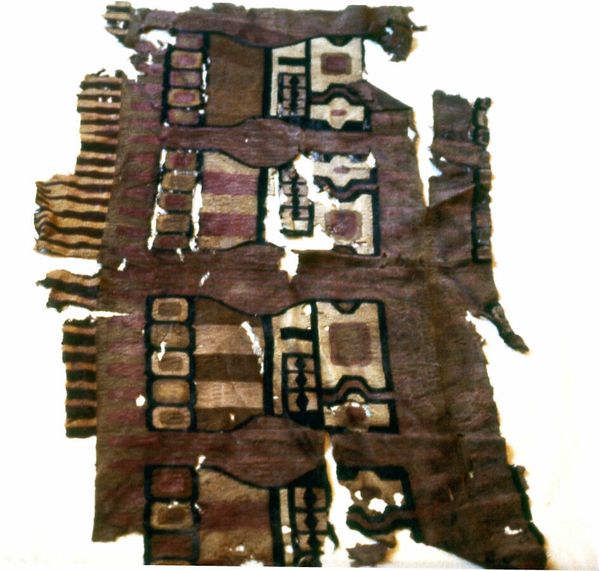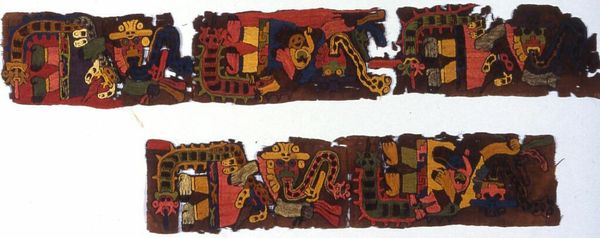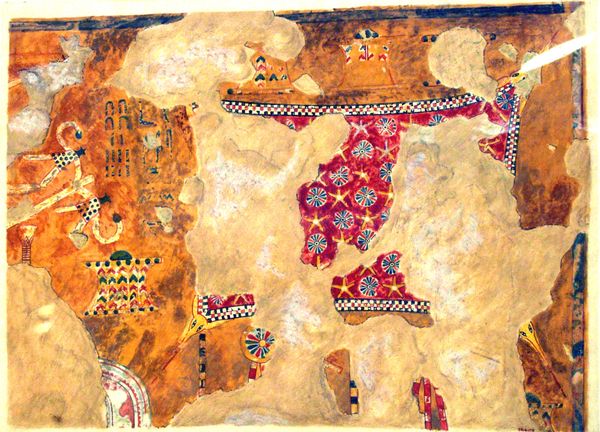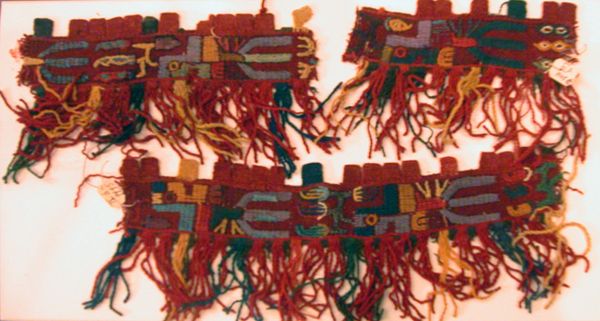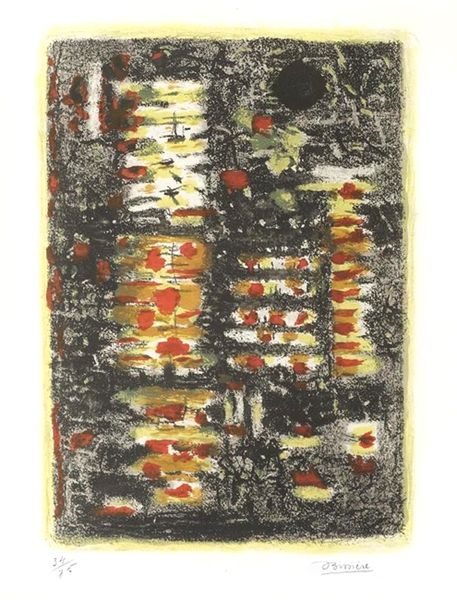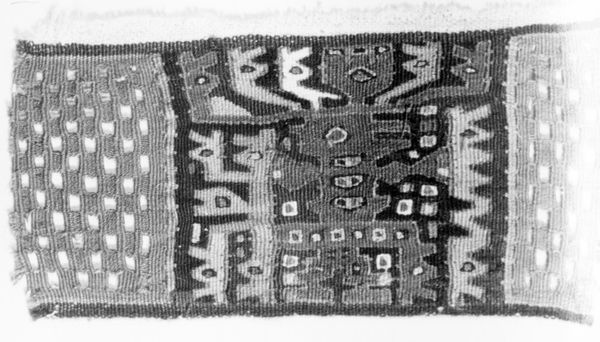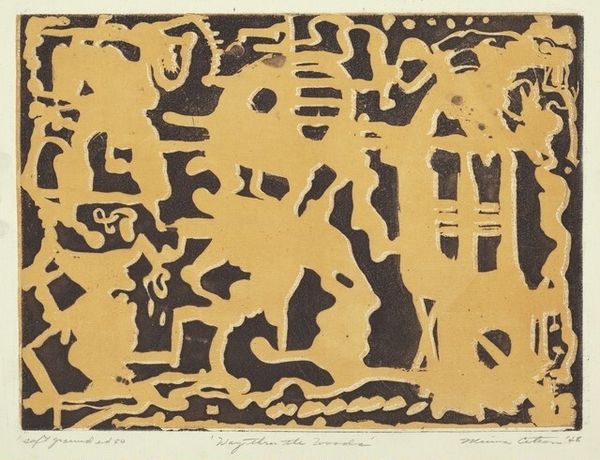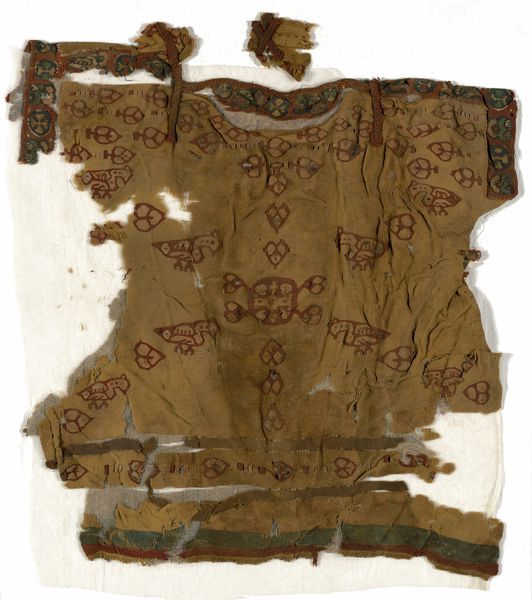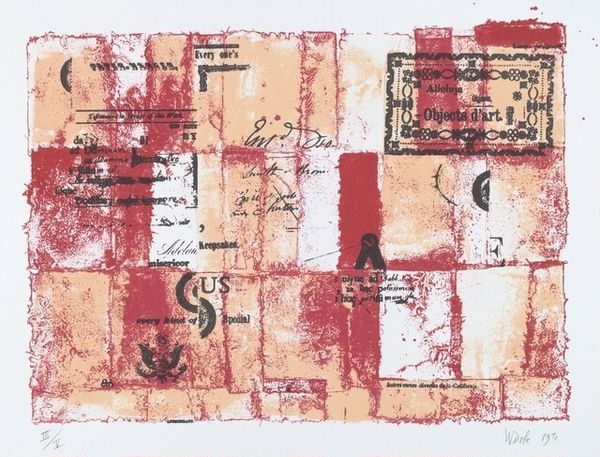
fibre-art, weaving, textile
#
fibre-art
#
weaving
#
textile
#
figuration
#
geometric
#
indigenous-americas
Copyright: Public Domain
This is a fragment of a woven border, made in the Nazca culture of ancient Peru. The primary material is dyed wool, woven in a tapestry technique to create complex geometric and figural patterns. The vibrant colors and intricate design point to a highly developed weaving tradition. The tapestry technique involves carefully interlinking weft threads of different colors to create the design, a slow and meticulous process. The inherent qualities of the wool, its texture, and ability to hold dye, are all essential to the work's appearance. This fragment also includes some small areas of cotton plain weave, which provide the ground for the woolen tapestry sections. The imagery, including stylized figures and geometric motifs, likely held symbolic meaning within Nazca society. The production of such a textile would have required significant labor and skill, suggesting that these works may have been objects of status, used in ritual or display. Considering the materials, making, and context is crucial to understanding the role this object played within Nazca society, highlighting its significance beyond mere decoration.
Comments
No comments
Be the first to comment and join the conversation on the ultimate creative platform.

